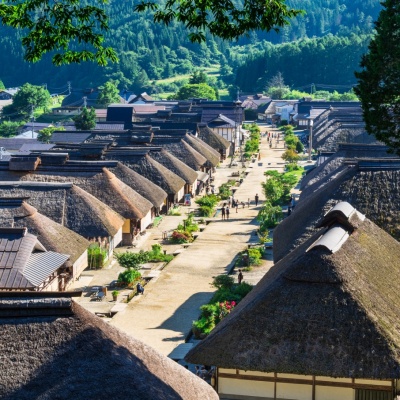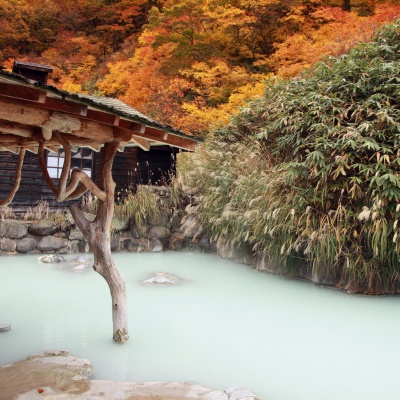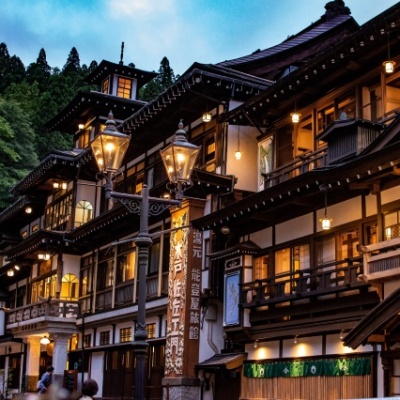3 days/2 nights based in Tendo Onsen [Base! Tohoku]
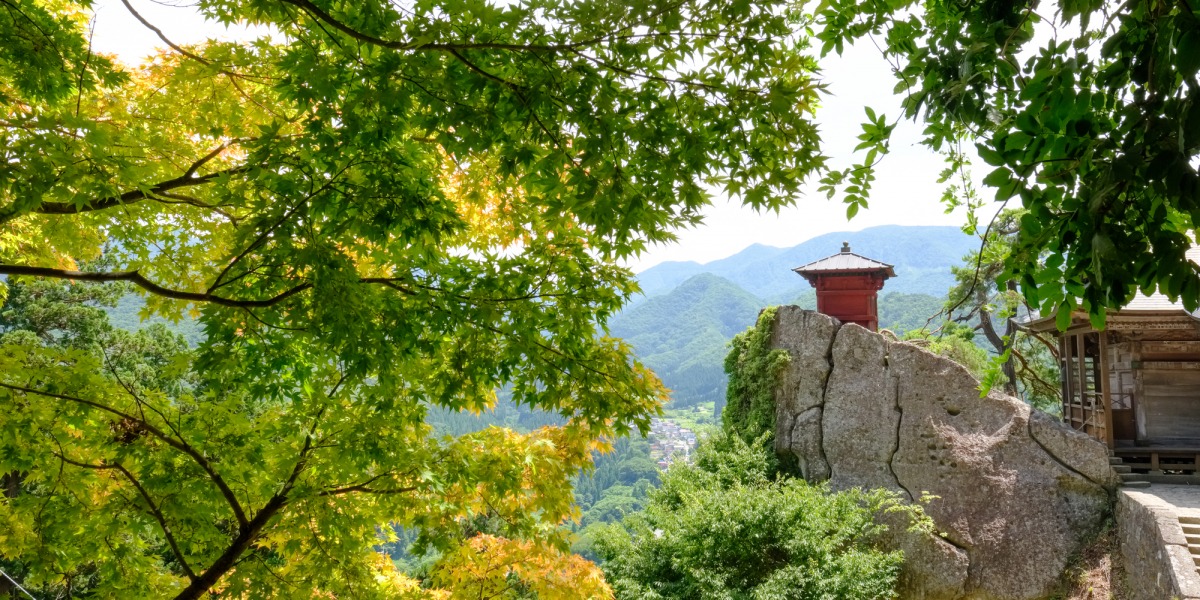
Tendo is a town famous for Shogi (Japanese chess). Designs featuring shogi (Japanese chess) pieces can be seen here and there in the hot spring resort area.
Let's take a trip to experience mountain beliefs such as Yamadera Temple and the three mountains of Dewa, and deeply appreciate Japanese culture.
START
Day1
Risshaku-ji Temple
The historic temple rising to the sky along delightful mountain paths described in the great Haiku master’s poem
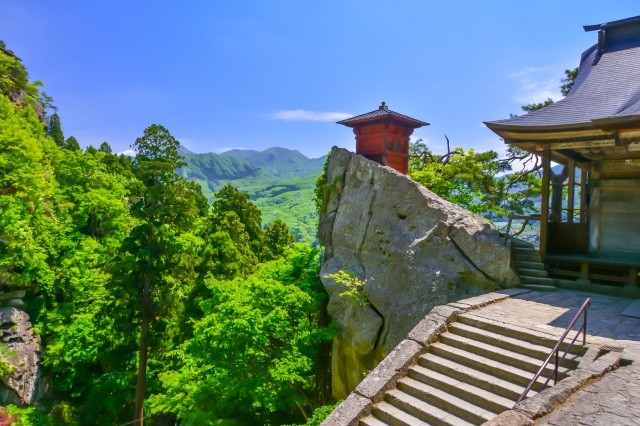
Risshaku-ji Temple is popularly known as Yamadera (Mountain Temple). The rocky mountain itself is a sacred location for ascetic Zen practices. Visitors can enjoy breath-taking views along the one-hour path from the foot of the mountain to Okunoin Temple and Daibutsuden Hall at the top. The great Haiku master Basho Matsuo composed one of his best-known Haiku poems “Shizukesa ya/iwa ni shimiiru/semi no koe” in the work “Oku no Hosomichi” (Narrow Road to the Deep North) while walking this path.
The series of 1,015 stone steps to Okunoin Temple is said to steadily release visitors from their worldly desires as they ascend. The many historic sites and scenic locations along the way encourage visitors to continue the climb while enriching the mind and senses.
The path begins with Konpo Chudo Hall, the oldest cedar wood building in Japan and a designated Important Cultural Property. Midahora Rock is a lucky location that is said to bring happiness if visitors can find the figure of Buddha on the side of the rock eroded by wind and rain over thousands of years. Passing through the Niomon Gate with a pair of fierce guardian god statues brings you to the majestic Kaizando and Nokyodo Halls. The red Nokyodo Hall sitting on a craggy mountain outcrop is an iconic view of the Yamadera. The steps on from Kaizando Hall take visitors to Godaido Hall which is evocative of a traditional Noh stage offering a panoramic view of the surrounding mountains. The final destinations are Okunoin Temple and Daibutsuden Hall, which is said to expel evil spirits.
After exploring the mountain temples be sure to enjoy the variety of local specialties available at the nearby shops including Yamadera Chikara Konjac, cherry ice cream and Dashi Soba noodles!
The series of 1,015 stone steps to Okunoin Temple is said to steadily release visitors from their worldly desires as they ascend. The many historic sites and scenic locations along the way encourage visitors to continue the climb while enriching the mind and senses.
The path begins with Konpo Chudo Hall, the oldest cedar wood building in Japan and a designated Important Cultural Property. Midahora Rock is a lucky location that is said to bring happiness if visitors can find the figure of Buddha on the side of the rock eroded by wind and rain over thousands of years. Passing through the Niomon Gate with a pair of fierce guardian god statues brings you to the majestic Kaizando and Nokyodo Halls. The red Nokyodo Hall sitting on a craggy mountain outcrop is an iconic view of the Yamadera. The steps on from Kaizando Hall take visitors to Godaido Hall which is evocative of a traditional Noh stage offering a panoramic view of the surrounding mountains. The final destinations are Okunoin Temple and Daibutsuden Hall, which is said to expel evil spirits.
After exploring the mountain temples be sure to enjoy the variety of local specialties available at the nearby shops including Yamadera Chikara Konjac, cherry ice cream and Dashi Soba noodles!
Sekiyama Waterfall
Marvel at this dynamic waterfall descending into a gorgeous emerald green plunge pool below!
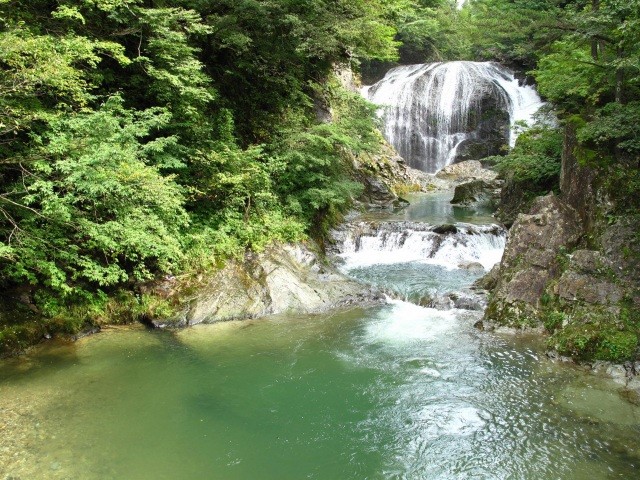
Sekiyama Waterfall is a 15-metre wide waterfall dropping 10 metres over a unique rocky surface into a beautiful emerald green plunge pool. This dynamic waterfall is an off-the-beaten-track scenic gem said to be filled with refreshing negative-ions.
Sekiyama Waterfall is located along Route 48 behind Otaki Drive-in Izumiya, an old-fashioned restaurant and souvenir shop. Visitors can enjoy sampling a wide range of local specialties including chars and ayu fish, konjac balls, grilled miso rice balls and Oden hot pot while enjoying superb views of the waterfall from the restaurant’s window-side tables.
After enjoying the astonishing view of the waterfall from above, a series of steep, narrow steps descends to the basin below offering more vibrant views of the waterfall. A red bridge brings visitors to the plunge pool flowing on down the river. The river water is so clear that schools of fish can clearly be seen below the water surface and the river is the perfect swimming location during summer when the emerald green water reflects the surrounding verdant greens.
The surrounding gorge is particularly impressive when the leaves change colours from mid-October to early November. The massive Katsura tree nearby, a designated prefectural natural monument, is a must-see.
In winter the waterfall blanketed in snow creates a magical view. Best of all the waterfall is located just across from the car park so visitors can enjoy the enchanting snowy view without freezing their toes off!
Sekiyama Waterfall is located along Route 48 behind Otaki Drive-in Izumiya, an old-fashioned restaurant and souvenir shop. Visitors can enjoy sampling a wide range of local specialties including chars and ayu fish, konjac balls, grilled miso rice balls and Oden hot pot while enjoying superb views of the waterfall from the restaurant’s window-side tables.
After enjoying the astonishing view of the waterfall from above, a series of steep, narrow steps descends to the basin below offering more vibrant views of the waterfall. A red bridge brings visitors to the plunge pool flowing on down the river. The river water is so clear that schools of fish can clearly be seen below the water surface and the river is the perfect swimming location during summer when the emerald green water reflects the surrounding verdant greens.
The surrounding gorge is particularly impressive when the leaves change colours from mid-October to early November. The massive Katsura tree nearby, a designated prefectural natural monument, is a must-see.
In winter the waterfall blanketed in snow creates a magical view. Best of all the waterfall is located just across from the car park so visitors can enjoy the enchanting snowy view without freezing their toes off!
Tendo Onsen
A Healing Journey at Tendō Hot Springs
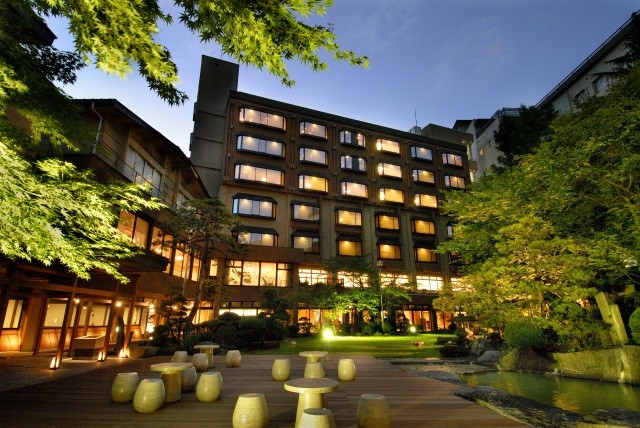
Tendo Onsen, blessed with a location near the center of Yamagata Prefecture and excellent transportation access, has developed as a lodging base for touring the prefecture. Accommodations range from modern hotels to traditional Japanese-style inns. It is a hot spring rich in travel sentiment, gently enveloping the traveler's mood throughout the seasons. Selected for the “34th Japan's Top 100 Hot Springs” by the Tourism Economy News, Tendo Onsen also boasts two establishments chosen for the “Top 250 Popular Hot Spring Inns and Hotels” and “Five-Star Lodgings”: “Smile Inn Takinoyu” and “Tendo Hotel”. Day-trip bathing is also available, allowing visitors to enjoy the hot springs with ease.
Day2
Nishikawa Town, Yamagata Prefecture, Dewa Sanzan (Three Mountains of Dewa), three mouths to climb and a tour of the roads
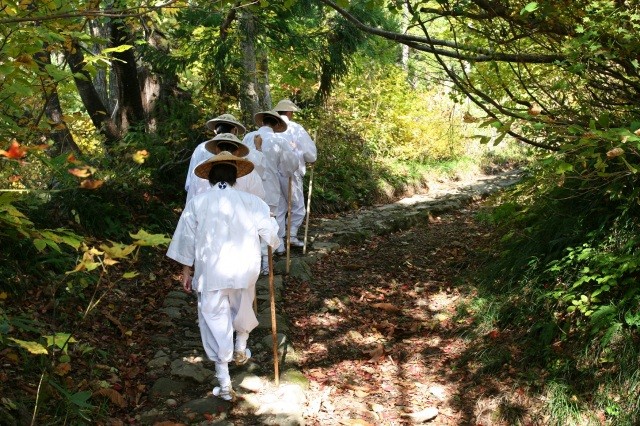
There are three entrances to the Dewa Sanzan from Nishikawa Town. Each entrance has a shrine: Iwanezawa-muchi - Iwanezawa Sanzan Shrine, Hondoji-muchi - Hondoji-muchi Nomiya Yudenyama Shrine, and Ooisawa-muchi - Ooisawa Yudenyama Shrine. There is also the Rokujurikoshi Kaido, a road that leads to these shrines. Guided tours of these three shrines and highways will be conducted by guides. By touring the three shrines, rather than each shrine alone, visitors will be able to enjoy the blessings of the shrines and double the pleasure of historical exploration.
Yudonosan Shrine
This mysterious sacred location is the last stop of the Three Mountains of Dewa
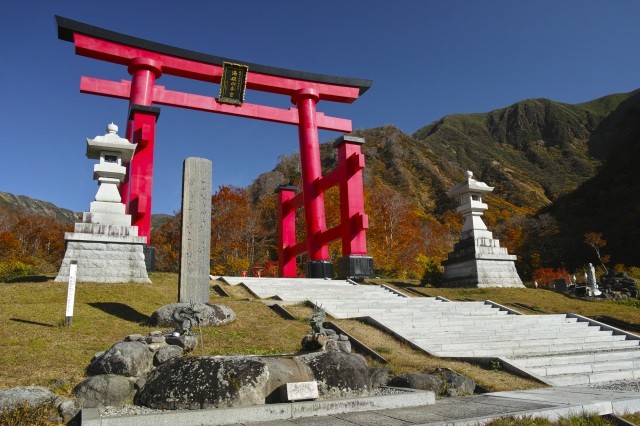
Mount Haguro, Mount Gassan and Mount Yudono, known as the Three Mountains of Dewa, have been revered as sacred mountains for hundreds of years. Travelling to these three mountains is said to be a journey of reincarnation as believers pray for the present on Mount Haguro, for the past on Mount Gassan and for the future on Mount Yudono. A popular proverb goes “a western pilgrimage to Ise Shrine and an eastern pilgrimage to the Three Mountains of Dewa”, and these mountains are a well-known destination for a once in a lifetime visit.
Mount Yudono is the final destination of the pilgrimage where mountain priests come for ascetic Zen practices after performing austere rituals in Mount Gassan and Mount Haguro. As a particularly sacred location there are a number of regulations visitors must observe when visiting Yudonosan Shrine. Photography is not allowed and in order to preserve the shrine’s mystery visitors are prohibited from talking about what they see and hear inside its precincts. The wearing of shoes is not allowed on the shrine’s grounds as the area is regarded as a sacred place separate from the outside world. The barefoot walk along the approach to the shrine gives visitors a feel for the earth’s energy.
There is no main shrine building, instead the object of worship here is a massive ginger-coloured rock spouting hot water. After purifying themselves at the shrine entrance, visitors are finally allowed to face the sacred rock to pray.
Meanwhile, Mount Yudono is known as a lucky location for matchmaking and is nicknamed “the Mountain of Lovers”. Unique good luck charms for romance popular with local women are available from the shrine.
Yudonosan Sanrojo beside the shrine’s main gate offers accommodation with hot spring facilities (reservations are required), day visits are also available. Note that visitors need to make a bow to the altar at the bathhouse before taking a bath!
Mount Yudono is the final destination of the pilgrimage where mountain priests come for ascetic Zen practices after performing austere rituals in Mount Gassan and Mount Haguro. As a particularly sacred location there are a number of regulations visitors must observe when visiting Yudonosan Shrine. Photography is not allowed and in order to preserve the shrine’s mystery visitors are prohibited from talking about what they see and hear inside its precincts. The wearing of shoes is not allowed on the shrine’s grounds as the area is regarded as a sacred place separate from the outside world. The barefoot walk along the approach to the shrine gives visitors a feel for the earth’s energy.
There is no main shrine building, instead the object of worship here is a massive ginger-coloured rock spouting hot water. After purifying themselves at the shrine entrance, visitors are finally allowed to face the sacred rock to pray.
Meanwhile, Mount Yudono is known as a lucky location for matchmaking and is nicknamed “the Mountain of Lovers”. Unique good luck charms for romance popular with local women are available from the shrine.
Yudonosan Sanrojo beside the shrine’s main gate offers accommodation with hot spring facilities (reservations are required), day visits are also available. Note that visitors need to make a bow to the altar at the bathhouse before taking a bath!
Tendo Onsen
A Healing Journey at Tendō Hot Springs

Tendo Onsen, blessed with a location near the center of Yamagata Prefecture and excellent transportation access, has developed as a lodging base for touring the prefecture. Accommodations range from modern hotels to traditional Japanese-style inns. It is a hot spring rich in travel sentiment, gently enveloping the traveler's mood throughout the seasons. Selected for the “34th Japan's Top 100 Hot Springs” by the Tourism Economy News, Tendo Onsen also boasts two establishments chosen for the “Top 250 Popular Hot Spring Inns and Hotels” and “Five-Star Lodgings”: “Smile Inn Takinoyu” and “Tendo Hotel”. Day-trip bathing is also available, allowing visitors to enjoy the hot springs with ease.
Day3
Kajo Park
A hub for cultural attractions around reconstructed castle buildings
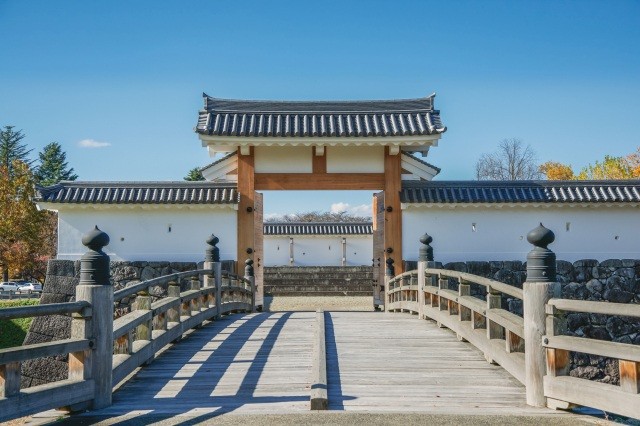
Yamagata Castle was constructed in 1592 by Yoshiaki Mogami, one of Tohoku’s prominent feudal lords of Japan’s Civil War period. It is recognised as one of Japan’s top 100 castles. Located in the centre of Yamagata city, the castle grounds were opened to the public as Kajo Park after World War Two. In recent years excavations and restorative works have been taking place. Visitors can enjoy the historic castle’s beauty in some of the reconstructed buildings including the main gates which were reassembled in 2018.
A heroic equestrian statue of Yoshiaki Mogami stands on the castle grounds. Yoshiaki was the founding and most popular feudal lord of the castle and dedicated resources to the city’s development.
The Yamagata Prefectural Hospital, built in 1878, was reconstructed as the Yamagata Kyodokan in 1969 and opened to the public with free admission. The western style building exhibits documents on local history along with medical equipment of that time. The nearby square pillar-shaped stone is a macabre historic site. Local folklore says that Yoshiaki placed the head of his biggest rival, Nagahisa Shiratori, on the stone when he murdered him.
Thanks to the 1,500 cherry blossom trees on the former castle grounds, Kajo Park is one of Yamagata’s best scenic locations for cherry blossoms. The row of cherry blossom trees along the east and south moats is illuminated during the peak blooming season. Besides the Yamagata Kyodokan, the park and the surrounding area have many cultural attractions popular with tourists including the Yamagata Prefectural Museum, the Yamagata Museum of Art and the Yoshiaki Mogami Historical Museum.
A heroic equestrian statue of Yoshiaki Mogami stands on the castle grounds. Yoshiaki was the founding and most popular feudal lord of the castle and dedicated resources to the city’s development.
The Yamagata Prefectural Hospital, built in 1878, was reconstructed as the Yamagata Kyodokan in 1969 and opened to the public with free admission. The western style building exhibits documents on local history along with medical equipment of that time. The nearby square pillar-shaped stone is a macabre historic site. Local folklore says that Yoshiaki placed the head of his biggest rival, Nagahisa Shiratori, on the stone when he murdered him.
Thanks to the 1,500 cherry blossom trees on the former castle grounds, Kajo Park is one of Yamagata’s best scenic locations for cherry blossoms. The row of cherry blossom trees along the east and south moats is illuminated during the peak blooming season. Besides the Yamagata Kyodokan, the park and the surrounding area have many cultural attractions popular with tourists including the Yamagata Prefectural Museum, the Yamagata Museum of Art and the Yoshiaki Mogami Historical Museum.
Yonezawa Castle Ruins / Matsugasaki Park
Travel back to Japan’s civil war period at this park with beautiful moats in the hometown of the Uesugi clan!
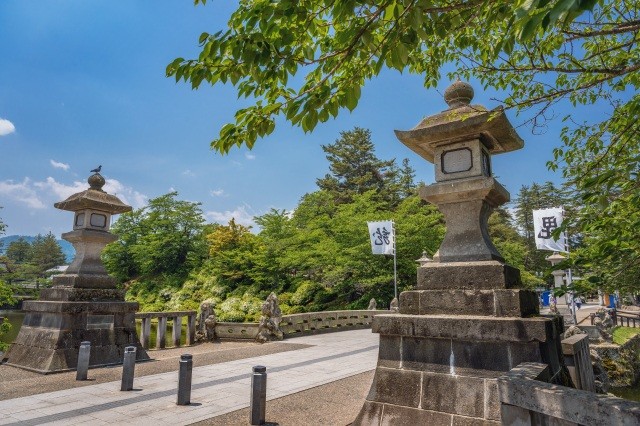
Matsugasaki Park is located on the grounds of the former Yonezawa Castle. The water-filled moats today lend a peaceful charm to the park in contrast with the castle’s turbulent history during the civil war period of many years ago. The park attracts history lovers thanks to its numerous sites related to the powerful Uesugi clan members. These included Kenshin Uesugi, one of the most powerful warriors during the civil war period of the 15th and 16th centuries, and Yozan Uesugi known for his saying “where there is a will, there is a way.” Historic attractions include the Uesugi Jinja Shrine, which today is believed to bring good luck and make wishes come true, and the treasure hall Keishoden exhibiting a number of Important Cultural Properties including relics of the Uesugi clan. There is also a stone monument indicating the birthplace of Masamune Date, the famous feudal lord known as Dokuganryu (One-Eyed Dragon).
The park is popular in spring when visitors come to view the 200 cherry blossom trees in bloom along the moats in mid to late April. Their pink flowers are particularly photogenic when reflecting on the water of the moats and make a beautiful contrast with the traditional red bridges crossing over the moats. Visitors can also enjoy magnificent autumn views when leaves of these cherry blossom trees change colours from late October to early November.
Nearby attractions include Matsugasaki Shrine enshrining Yozan Uesugi and Uesugi Joshien offering a wide range of local delicacies and crafts. Be sure to include these attractions during your visit to the park!
The park is popular in spring when visitors come to view the 200 cherry blossom trees in bloom along the moats in mid to late April. Their pink flowers are particularly photogenic when reflecting on the water of the moats and make a beautiful contrast with the traditional red bridges crossing over the moats. Visitors can also enjoy magnificent autumn views when leaves of these cherry blossom trees change colours from late October to early November.
Nearby attractions include Matsugasaki Shrine enshrining Yozan Uesugi and Uesugi Joshien offering a wide range of local delicacies and crafts. Be sure to include these attractions during your visit to the park!
Uesugi Jinja Shrine
Receive some good luck at the shrine of Kenshin Uesugi, one of the most powerful warriors of the civil war period
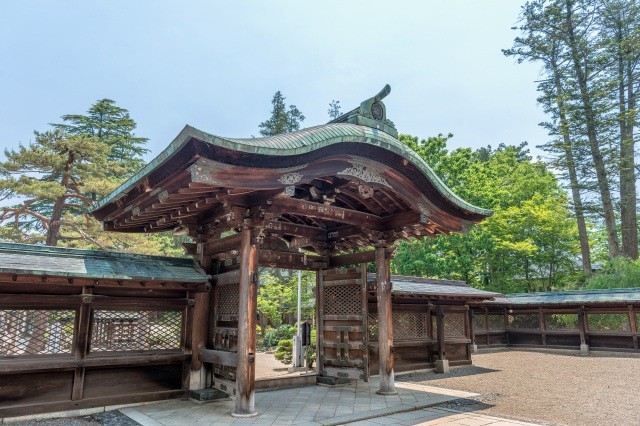
Uesugi Jinja Shrine was built on the grounds of the former Yonezawa Castle to enshrine Kenshin Uesugi, one of the most powerful warriors of the civil wars of the 15th and 16th centuries. The shrine is believed to bring good luck, academic success and thriving business thanks to Kenshin’s lingering spiritual energy.
Along the approach to the shrine, a pair of battle flags each with a Chinese character flies in the breeze on Maizuru Bridge. One has “Bi” for Bishamonten (also known as Vaisravana, the Buddhist guardian of the north) who Kenshin strongly believed in. The other has “Dragon” for Fudo Myo-o (a wrathful deity) that was used as a signal for rushing at the enemy’s position when Kenshin launched an all-out attack. Kenshin‘s firm religious faith led him to take the two most powerful deities of Buddhism to the battlefields.
History lovers should visit the treasure hall Keishoden which exhibits a number of Important Cultural Properties including relics of the Uesugi clan. There is a famous helmet of Kanetsugu Naoe, a renowned warrior and scholar, marked with the Chinese character for “Love” on display.
The shrine is located in Matsugasaki Park, a popular scenic location when the 200 cherry blossom trees lining the park moats are in bloom from mid to late April. The Yonezawa Uesugi Festival takes place at the shrine and the surrounding area from 29 April to 3 May each year. The festival’s highlights include a procession of over 1,000 shrine-parishioners dressed in extravagant samurai costumes carrying portable shrines known as Uesugi Gyoretsu, and a performance of the Battle of Kawanakajima, the biggest battle of Japan’s civil war era. The Uesugi Snow Lantern Festival takes place at the shrine and Matsugasaki Park on the weekend of the second Saturday of February each year. Over 300 candle-lit snow lanterns and 1,000 snow lamps transform the park into a winter wonderland!
The nearby Matsugasaki Shrine of Yozan Uesugi, known for the saying “where there is a will, there is a way”, also belongs to Uesugi Shrine. Visit both of the shrines for a double dose of luck!
Along the approach to the shrine, a pair of battle flags each with a Chinese character flies in the breeze on Maizuru Bridge. One has “Bi” for Bishamonten (also known as Vaisravana, the Buddhist guardian of the north) who Kenshin strongly believed in. The other has “Dragon” for Fudo Myo-o (a wrathful deity) that was used as a signal for rushing at the enemy’s position when Kenshin launched an all-out attack. Kenshin‘s firm religious faith led him to take the two most powerful deities of Buddhism to the battlefields.
History lovers should visit the treasure hall Keishoden which exhibits a number of Important Cultural Properties including relics of the Uesugi clan. There is a famous helmet of Kanetsugu Naoe, a renowned warrior and scholar, marked with the Chinese character for “Love” on display.
The shrine is located in Matsugasaki Park, a popular scenic location when the 200 cherry blossom trees lining the park moats are in bloom from mid to late April. The Yonezawa Uesugi Festival takes place at the shrine and the surrounding area from 29 April to 3 May each year. The festival’s highlights include a procession of over 1,000 shrine-parishioners dressed in extravagant samurai costumes carrying portable shrines known as Uesugi Gyoretsu, and a performance of the Battle of Kawanakajima, the biggest battle of Japan’s civil war era. The Uesugi Snow Lantern Festival takes place at the shrine and Matsugasaki Park on the weekend of the second Saturday of February each year. Over 300 candle-lit snow lanterns and 1,000 snow lamps transform the park into a winter wonderland!
The nearby Matsugasaki Shrine of Yozan Uesugi, known for the saying “where there is a will, there is a way”, also belongs to Uesugi Shrine. Visit both of the shrines for a double dose of luck!
GOAL
